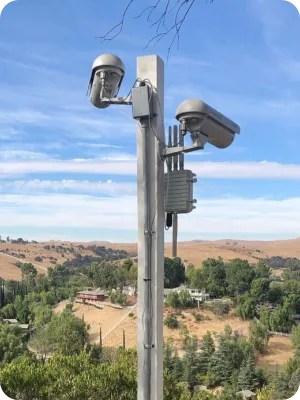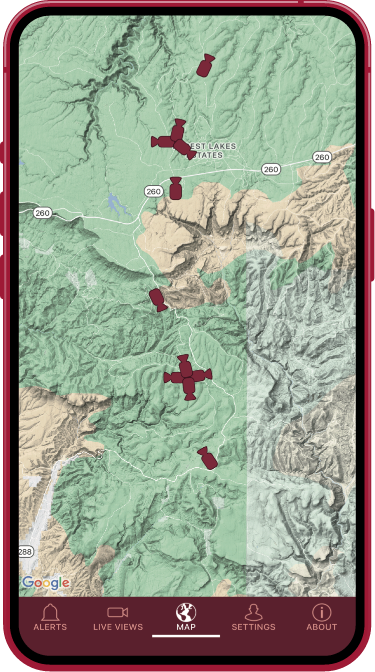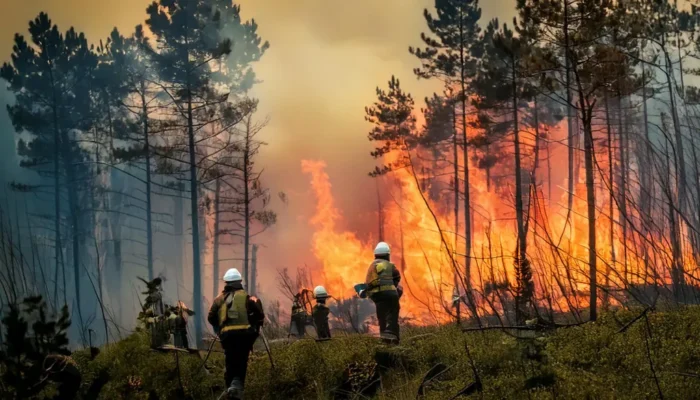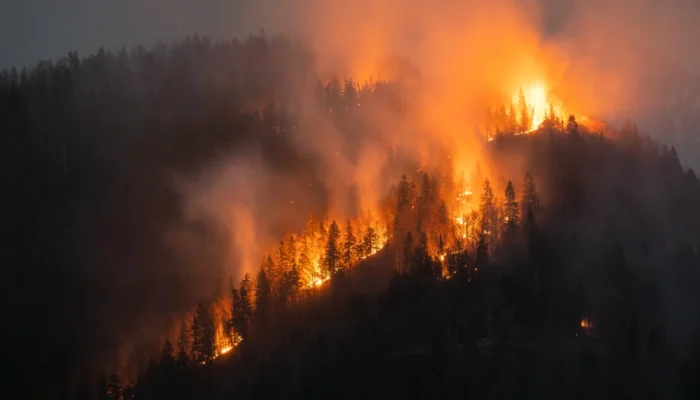Wildfires are becoming one of the most pressing natural disasters in many regions of the world, fueled by hotter summers, longer droughts, and changing climates that make forests, grasslands, and even suburban areas more vulnerable to flames that can start with just a spark. Communities that once thought they were safe are now discovering that fire risk can spread quickly and unpredictably, which makes it more important than ever to understand how to prepare, how to respond, and how to stay informed when danger arises. This is where Wildfire Awareness plays a crucial role, because without a clear understanding of fire risks and the steps people can take to protect themselves, their families, and their property, the chances of serious losses are much greater. In the past, wildfire information traveled slowly through radio, television, or local emergency networks, but today the speed and reach of social media platforms have made it possible to share urgent updates within seconds, giving individuals a chance to act quickly.
.
Table of Contents
ToggleThe Importance of Early Information in Wildfire Prevention

When a wildfire starts, every minute matters, because fire spreads quickly, smoke reduces visibility, and evacuation routes can be blocked within a short time. If a person hears about the fire early enough, they may have time to gather their loved ones, secure important belongings, and leave safely before conditions worsen. Traditionally, news about wildfires came from local radio broadcasts, emergency sirens, or television coverage, which were often helpful but not always fast enough to reach people who lived in remote areas or who were not actively watching or listening at the right moment.
Social media changed this pattern by offering an instant communication channel that can reach thousands of people in real time. A single post from a fire department or emergency management agency can be shared, retweeted, or forwarded to networks of friends and neighbors within seconds, creating a ripple effect that spreads critical warnings. Early information not only helps families evacuate, but it also allows community members to assist vulnerable neighbors, prepare their homes by removing flammable items, and avoid roads that may become blocked. In this sense, social media has become an essential tool for wildfire prevention and early action, giving people time they would not otherwise have.
.
Social Media Platforms as Tools for Wildfire Awareness
Different platforms play different roles in spreading wildfire information, and each one offers unique advantages that help people stay safe and educated.
Twitter, which is now called X, has long been known as a hub for real-time updates, because emergency services, meteorologists, and even local residents use it to post short, immediate alerts. During wildfires, Twitter feeds can show live updates about fire locations, evacuation orders, road closures, and weather changes, and because of the way the platform is designed, these posts can spread rapidly to anyone who follows official accounts or who searches for local hashtags.
Facebook and Instagram, on the other hand, are often used by communities to create local groups where neighbors share updates, photographs, and advice. Fire departments can post longer updates with maps and safety instructions, and individuals can use visual storytelling to show how a wildfire is spreading or what their neighborhoods look like in real time. Instagram stories or posts can also carry powerful educational campaigns that remind people about fire prevention steps, such as keeping yards clear of brush or preparing an evacuation kit.
Platforms like TikTok and YouTube, while not as focused on emergency alerts, have become powerful tools for education and long-term wildfire awareness. Firefighters, environmental groups, and educators create videos that explain how wildfires start, what conditions make them worse, and what families should do before fire season arrives. Short, engaging clips can reach younger audiences who may not read lengthy articles but will watch a creative, informative video that teaches them safety measures.
Real-life examples have shown that these platforms can make a big difference. In recent years, communities threatened by fast-moving wildfires in California, Australia, and Canada have relied heavily on social media for updates, often receiving information more quickly than through traditional news sources. This shows how important these platforms are in both emergency response and long-term education.
.
Community Engagement and Education

One of the most powerful aspects of social media is its ability to bring people together, not just during a crisis but also before and after. Fire departments and emergency agencies often run official accounts where they post fire safety tips, seasonal reminders about burn bans, or guides on how to create defensible space around homes. These posts help build community knowledge, and because they come from trusted sources, they encourage people to take fire prevention seriously.
Residents themselves also play a role by sharing personal experiences, such as what it was like to evacuate during a fire or how they prepared their homes ahead of fire season. These stories often resonate more strongly with neighbors than official reports, because they feel personal and relatable. When a person sees that someone in their community successfully protected their home by clearing brush or installing fire-resistant materials, they may be more motivated to take similar steps.
Hashtags, geotagging, and local community groups also help organize wildfire education. A hashtag like #WildfireAwareness can connect posts from different regions, while geotagging ensures that people see updates specific to their own area. Local Facebook or WhatsApp groups allow neighbors to coordinate evacuation plans, share supplies, or check on each other during a crisis. In this way, social media does more than spread information—it builds a sense of solidarity and shared responsibility.
.
Combating Misinformation and Ensuring Accuracy
While social media can be a powerful tool, it also carries risks, because false or misleading information can spread just as quickly as accurate updates. During a wildfire, rumors about where the flames are moving, which roads are open, or whether certain neighborhoods are safe can cause confusion and panic. This is why verifying information is so important.
The best way to ensure accuracy is to rely on trusted sources, such as official fire agencies, government emergency services, or established news organizations that are directly connected to fire authorities. Following and subscribing to these accounts before fire season begins can make it easier to get accurate updates when a crisis hits. Social media users should also be cautious about resharing information unless they are certain it comes from a verified source, because spreading false alerts can create unnecessary fear.
.
The Role of Wildfire Prevention Apps

Alongside social media, specialized apps have been developed to provide accurate, real-time wildfire information and to reduce the spread of misinformation. These apps are designed to pull data directly from monitoring systems, giving users updates that they can trust. One example is the SmokeD Alerts, which is part of the larger SmokeD System. The system uses a network of wildfire detectors installed in high-risk zones, and the app is directly connected to these detectors.
SmokeD Alerts can be used both by detector owners and by other users who want to receive notifications about detected fires in their region. In some cases, images from these detectors may be made public by clients, giving users a verified visual confirmation of potential threats. The alerts arrive instantly on a user’s phone, and they can then be shared across social media platforms, through emails, or by text messages, allowing communities to spread trustworthy, system-generated warnings quickly.
Unlike unverified social media posts that might create confusion, apps like SmokeD Alerts provide structured, data-driven insights that improve both accuracy and reliability. By combining the app’s official notifications with the wide reach of social platforms, communities can strengthen their wildfire preparedness and ensure that Wildfire Awareness is supported by both technology and communication.
.
Long-Term Mitigation Through Social Media Campaigns
Even after a wildfire is contained, the role of social media continues, because awareness and prevention are year-round responsibilities. Educational campaigns that teach people how to create defensible space around their homes, how to prepare evacuation kits, and how to follow local fire regulations are shared widely on Facebook pages, Instagram reels, and TikTok videos. These campaigns remind residents that wildfire safety is not only about responding to a fire but also about reducing risks before one even starts.
For example, many fire departments use social media to post seasonal reminders, such as when to clear dry leaves from yards, when burn bans are in effect, or how to store firewood safely. These small but regular reminders keep fire safety in people’s minds, preventing them from becoming complacent during seasons of lower fire activity.
Social media also helps sustain Wildfire Awareness by making fire education more engaging. Creative graphics, videos, and even community challenges encourage people to take action, such as sharing photos of their cleared yards or posting their evacuation kits. Over time, these campaigns build a culture of safety and responsibility, making entire neighborhoods more resilient.
.
Conclusion
Social media has transformed the way communities understand, prepare for, and respond to wildfires. By delivering rapid updates, fostering community engagement, supporting education, and encouraging responsible prevention practices, platforms like Twitter, Facebook, Instagram, TikTok, and YouTube have become essential tools in the fight against wildfire damage. At the same time, wildfire prevention apps such as the SmokD App Alert provide an added layer of accuracy, reducing the risk of misinformation and helping people trust the guidance they receive.
As wildfires continue to threaten communities worldwide, the role of social media in spreading Wildfire Awareness will only grow more important. Families who stay connected to official sources, participate in community groups, and use prevention apps will be better prepared when fire season comes. The responsibility lies with both agencies and individuals to use these tools wisely, share accurate information, and remain engaged in fire prevention year-round. In the end, the more people understand about the risks of wildfires and the steps they can take to stay safe, the stronger and safer their communities will become, and this is why Wildfire Awareness is not just a seasonal message but a constant reminder of how vital education, communication, and preparation truly are.




